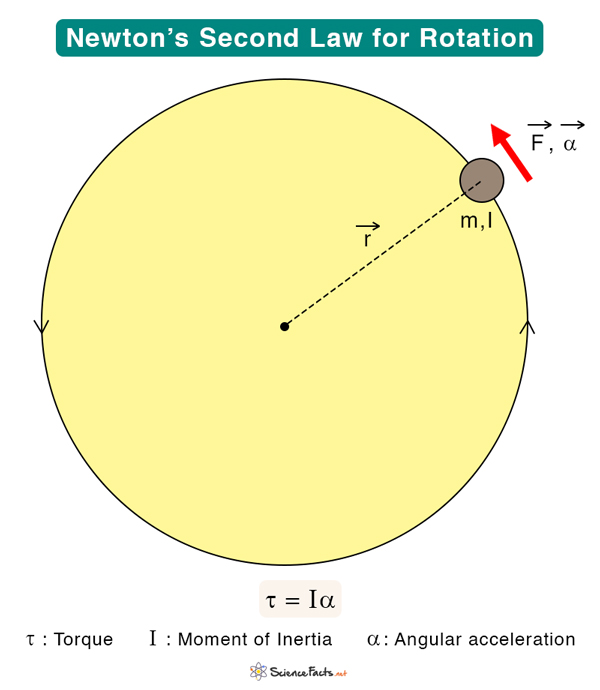Newton’s Second Law for Rotation
Newton’s second law for rotation states that the torque acting on a rotating body is proportional to the angular acceleration. It is analogous to Newton’s second law for linear motion, where the force is proportional to acceleration.
Equation
According to Newton’s second law for rotation,
Where,
τ: Torque
The above equation is critical in rotational kinematics and tells us how torque, moment of inertia, and angular acceleration are related.
Derivation
Consider an object of mass m rotates about an axis such that it executes a circular motion with radius r, as shown in the image. Let F be the force acting on it at any instant, resulting in a linear acceleration a. The following is the well-known version of Newton’s second law.
The magnitude of linear acceleration in the direction of the force is
The following equation relates the object’s tangential acceleration α to the linear acceleration.
Substituting this into Newton’s second law, we obtain
Multiplying both sides by r
The left-hand side of the above equation is the torque τ, where r is the lever arm and F is the force perpendicular to r. Also, for a point particle, the moment of inertia is given by the following expression.
Therefore, the applied torque on the object executing circular motion is
If a rigid body experiences several torques, the net torque is the sum of all the torques, which equals the moment of inertia times the angular acceleration.
The term Iα is scalar whose sign depends on whether the rotation is clockwise or counterclockwise.
In vector form, Newton’s second law for rotation is given by
-
References
Article was last reviewed on Thursday, September 29, 2022









Nice piece